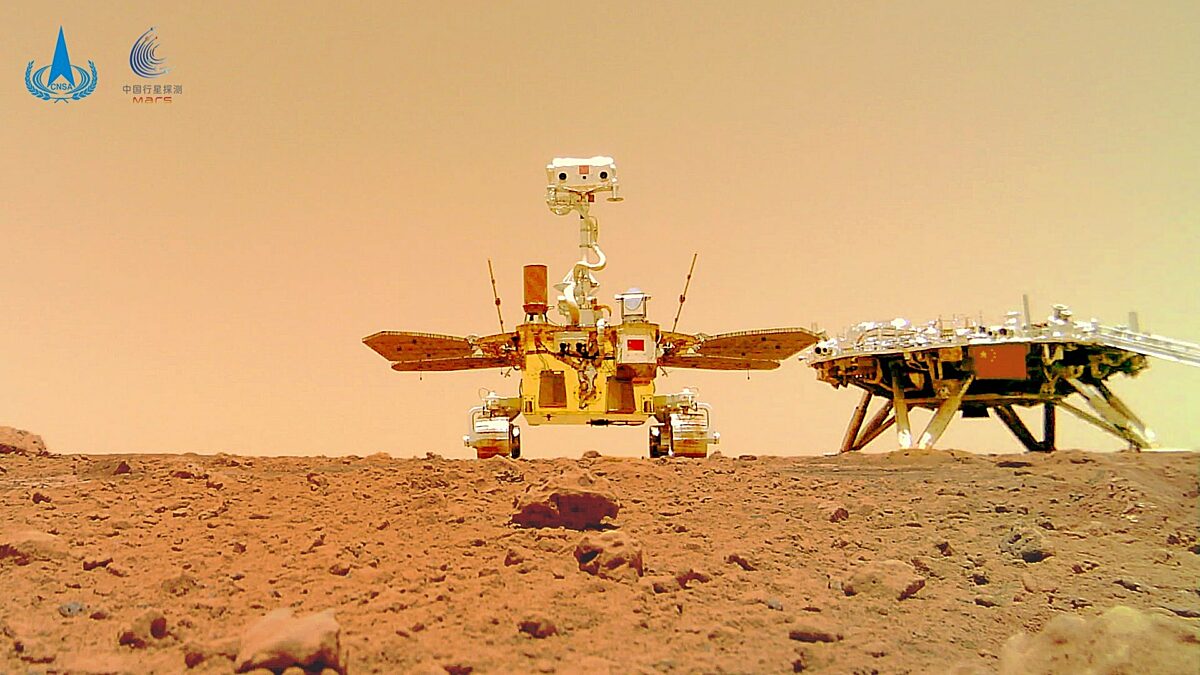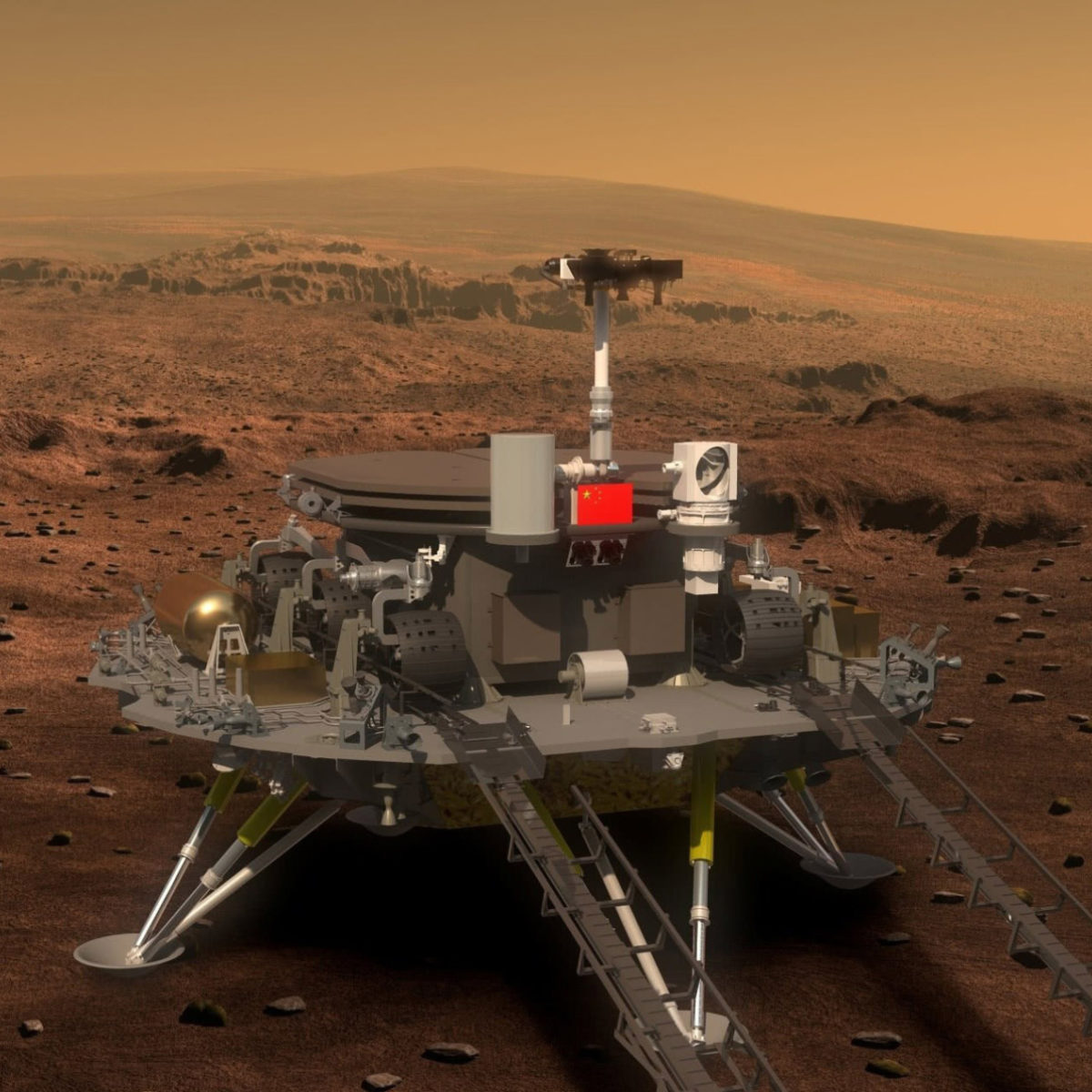The China National Space Administration (CNSA)
What does the CNSA do?
The CNSA helps manage China’s space projects and policies. It operates the Chinese lunar and planetary exploration programs, organizes international collaborations, directs scientific research, and helps develop China’s space industry. It does not oversee human spaceflight — that’s done by the China Manned Space Agency (CMSA)— and it is not the only public organization in China dedicated to uncrewed space missions, since the Chinese Academy of Sciences also launches space telescopes. Instead, the CNSA helps guide China’s space law, operates a fleet of satellites for Earth observation, and sends missions to explore the Solar System.

The CNSA manages China’s Chang’e program. Over the course of several missions, Chang’e spacecraft have landed on the Moon, driven rovers over its surface, and become the first ever to bring back samples from the far side of the Moon. Future Chang’e missions will explore resources on the lunar surface and lay the foundation for a crewed base.
Farther afield, CNSA sends missions to explore asteroids and other planets through its Tianwen program. The program’s first mission, Tianwen-1, successfully orbited, landed, and operated a rover on Mars. Its second mission is planned to launch in 2025 and visit both an asteroid and a comet. After that, Tianwen-3 will aim to bring samples back from Mars.
In the future, the CNSA will also operate the Xuntian Space Telescope.

What has the CNSA accomplished?
The CNSA has:
- Brought back the first samples from the far side of the Moon, with Chang’e-6
- Landed and drove the Zhurong rover on Mars
- Operated multiple rovers and orbiters around the Moon
- Made the first-ever soft landing on the far side of the Moon, with Chang’e-4
- Managed dozens of Earth observation satellites
Though they were not CNSA efforts, it is worth noting that other Chinese space missions have built a permanently crewed space station (called Tiangong), performed spacewalks, and launched space telescopes to study the Sun, black holes, galaxies, and dark matter.
China also operates a fleet of communications and navigation satellites. In 2003, it became the third country in the world capable of sending humans to space and back on its own.

How does the CNSA work?
The CNSA is an administrative agency that helps enforce China’s national space policy. Rather than develop launch vehicles and spacecraft itself, the CNSA contracts with state-owned companies like the Chinese Aerospace Science and Technology Corporation (CASC) and its subsidiaries. The CNSA reports to the State Administration for Science, Technology, and Industry for National Defense, a civilian organization dedicated to guiding space research and development with both military and peaceful applications.
How big is the CNSA? The CNSA operates alongside other government corporations and the CMSA. Altogether, China’s space program cost about $14 billion in 2023. This figure is about half of NASA’s budget, but unlike NASA, it also includes some spending on military activities.
CNSA missions often collaborate with other organizations from around the world. Instruments built by other institutions have flown aboard Chang’e missions and Tianwen-1, while the European Space Agency (ESA) has helped provide ground support for several Chang’e spacecraft. About a dozen countries, including Russia, have signed on to collaborate with China on the construction of a future crewed outpost on the Moon.
ESA and Russia have also worked with parts of China’s space program that aren’t administered by the CNSA. Russia has provided China with human spaceflight technology and astronaut training, both of which helped get China’s crewed launch vehicles and space stations off the ground. ESA has collaborated with the Chinese Academy of Sciences on an X-ray space telescope. A joint ESA-CNSA solar observatory is also slated for launch in the near future.

The CNSA does not collaborate with NASA often, and NASA faces significant restrictions by the U.S. Congress on how the agency engages with the Chinese space program. There are still instances, though, when the CNSA and NASA cooperate, often after NASA has received special permission from Congress.
The Chinese space program* can:
- Build and operate its own satellites
- Build its own launch vehicles
- Build human-rated spacecraft
- Provide commercial launch services
- Launch humans into space
- Perform space science missions
How did the CNSA get started?
China’s space program existed before the CNSA, but it was organized differently. From the 1950s until the late 1980s, Chinese space development was managed by the Ministry of Aerospace Industry and mostly served military applications. Then, in 1988, that ministry was restructured into the Ministry of Astronautics Industry.
Five years later, that ministry in turn was split into the CNSA and the CASC. The China Aerospace Corporation was officially established and, with the approval of the 8th National People’s Congress of China, given the title of the China National Space Administration.
The idea was to separate the organization in charge of managing projects (the CNSA) from the organizations that would actually execute the projects by building rockets and spacecraft (the CASC). While both are state-owned, only the CNSA is directly run by the state. The resulting system is more similar to how the Soviet space program operated and is thought to foster more competition.
*The CNSA, CMSA, and related state corporations.
China plans to select one of two Jupiter mission concepts that would launch in 2029 and arrive in 2035.
China's Chang’e-5 mission returned Moon samples to Earth and is now in a long-term lunar orbit.
China’s first Mars mission is searching for pockets of water beneath the surface that could host life.
China's Chang'e-4 mission delivered a landing platform and a rover named Yutu-2 to the Moon's farside.


 Explore Worlds
Explore Worlds Find Life
Find Life Defend Earth
Defend Earth





